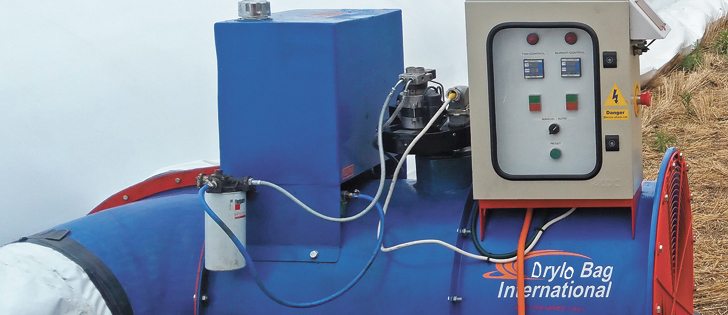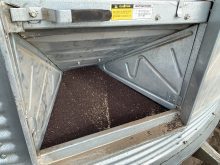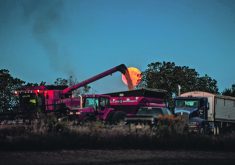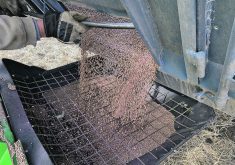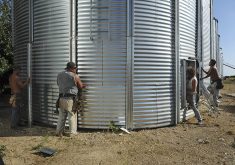Demand has increased for temporary grain storage bags and equipment over the past few years because on-farm storage has been unable to accommodate big crops and added acres.
There are many benefits to temporarily storing grain in bags in the field, not the least of which is the low per-bushel cost.
However, there are also drawbacks.
The difference between a grain storage bag and a silage bag is a couple points of moisture, as some growers who were unable to wait for their grain to completely dry down before they bagged it have found out.
DryloBag International has a solution that reduces the risk of spoilage and allows growers to bag tough grain.
“You can start easily at 18 percent and bring it down to 13 percent, depending on the weather and humidity, but it will take approximately a week,” said Werner Swart of DryloBag.
He was at the Ag In Motion farm show near Saskatoon this summer to demonstrate the company’s grain bagging system, which uses aeration powered by a trailer-mounted diesel engine.
“The diesel engine drives the fan, and the heat of the engine goes into the system all along the side, so you have cross flow,” Swart said.
“Air flows in a cross direction through the bag, thereby you can dry grain in the bag.”
The portable drying unit allows growers to set up anywhere, even if there isn’t electricity nearby.
Read Also

Growing garlic by the thousands in Manitoba
Grower holds a planting party day every fall as a crowd gathers to help put 28,000 plants, and sometimes more, into theground
A tunnel runs along each side of the grain bag, in which air is blown on one side of the bag and exits the other side.
“That’s why you can use an actual fan as opposed to a centrifugal fan,” Swart said.
“So the airflow, the CFM (cubic feet of air per minute) per bushel is much higher, and that’s why you can do proper drying in this bag.”
Heat from the diesel engine passes through a heat exchanger, so exhaust fumes do not contaminate the grain.
A supplemental burner can be added to quicken grain drying, he added.
The engine and heating system is fully automatic.
“It will start itself and shut off, according to the humidity and temperature, and any condensation in the system,” he said.
“It’s fully automatic and it will just go on. Once the grain is dry, you move it to the next bag. While you are still busy harvesting, the drying is going on all by itself.”
He said the engine uses approximately two litres of diesel per hour, and it costs only a few cents per bushel to dry grain.
The DryloBag bags are compatible with all bagging machines sold in Canada, Swart said.
DryloBag sells nine-foot bags that are 165 feet long, holds 7,000 bu. and costs $1,700.
Swart said the company plans to make 10-foot bags for the Canadian market that will hold approximately 10,500 bu.
The DryloBag has been used in Australia and South Africa on thousands of tonnes of grain, including soybeans, wheat and corn.
Swart said the company will test the system on canola soon, and the bags and machines will be available in Canada next year.




